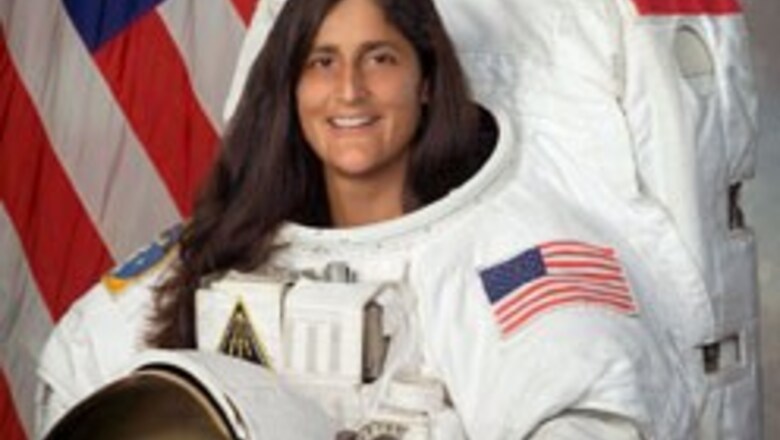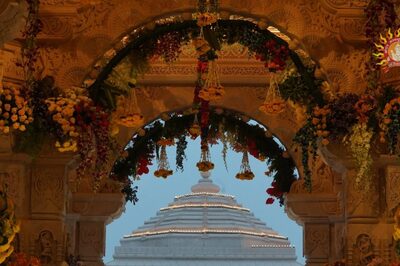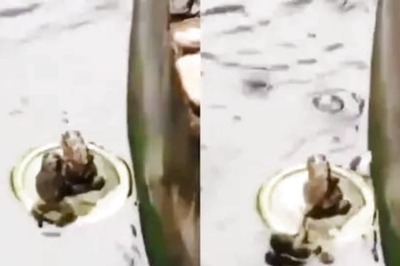
views
Washington: Another Indian American astronaut Sunita Williams, is all set to go into space on December 7 with National Aeronautics and Space Administration (NASA) clearing space shuttle Discovery for its first night time launch in four years.
Flight engineer Williams will join six other crew as Discovery lifts off at 9:36 pm on December 7 in the third launch of the year and the fourth since the Columbia disaster killed seven astronauts including Indian-born Kalpana Chawla in 2003.
"There were really no dissenting opinions on the night launch," said NASA's associate administrator, Bill Gerstenmaier on Wednesday announcing the launch plans for the 20th flight to the International Space Station on a 12-day mission.
The announcement followed a two-day flight readiness review at NASA's Kennedy Space Center in Florida typically conducted two weeks prior to the opening of the launch window for each space shuttle mission.
The group thoroughly evaluates all activities and elements necessary for the safe and successful performance of shuttle mission operations from the pre-launch phase through post-landing including the readiness of the vehicle, flight crew and payloads.
The launch window for the STS-116 mission opens on December 7 and extends through December 17.
The seven-member flight crew will arrive for launch at Kennedy's Shuttle Landing Facility the afternoon of December 3.
Born September 19, 1965 in Euclid, Ohio, Williams received her commission as an Ensign in the United States Navy from the United States Naval Academy in May 1987. She has logged over 2770 flight hours in more than 30 different aircraft.
Selected by NASA in June 1998, Williams worked in Moscow with the Russian Space Agency on the Russian contribution to the International Space Station and with the first Expedition Crew to the ISS.
Following the return of Expedition-1, Williams has worked within the Robotics branch on the ISS Robotic Arm and the follow on Special Purpose Dexterous Manipulator.
As a NEEMO2 crewmember she lived underwater in the Aquarius habitat for nine days.
NASA required the three launches after the Columbia accident to be in daylight so clear images could be taken of the space shuttle's external fuel tank in case foam falls off it.
PAGE_BREAK
Foam breaking off the tank and striking Columbia's wing at liftoff caused the damage that led to the disaster.
The space agency needs to start launching shuttles at night to finish space station construction by 2010, when the shuttle programme ends.
The external tanks had acceptable levels of foam loss during the last two liftoffs.
NASA managers also believe radar is sufficient to spot any pieces falling from Discovery's tank and that two in-flight inspections would detect any damage.
If the shuttle were damaged during liftoff, astronauts could seek shelter at the space station while awaiting a rescue flight.
If the launch does not happen December 7, NASA can keep trying through December 17. After that, the agency will re-evaluate its options and may call it quits until January.
NASA wants Discovery back from its 12-day mission by New Year's Eve because shuttle computers are not designed to make the change from the 365th day of the old year to the first day of the new year while in flight.
The space agency has figured out a solution for the New Year's Day problem, but managers are reluctant to try it since it has not been thoroughly tested.
During the four-day terminal countdown demonstration test, Williams and other astronauts will be fitted for their orange launch and entry suits, practice an emergency egress from the launch pad, and drive the M-113 armoured personnel carrier.
The training schedule is highlighted by a launch dress rehearsal in which the fully suited crew participates in a simulated countdown.
Led by Commander Mark Polansky, other crewmembers include Mission Specialists Joan Higginbotham, Nicholas Patrick, Robert Curbeam and Christer Fuglesang and Pilot William Oefelein.


















Comments
0 comment